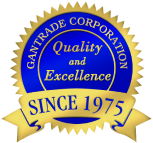What is a surfactant?
Surfactants are unique organic molecules that are made up of a polar hydrophilic and a non-polar hydrophobic component. The action-end of the molecule is the polar head group which is often anionic or cationic in nature. The hydrophobic portion of the molecule is generally a long-chain hydrocarbon.
Types of surfactants: how are they classified?
There are two types of surfactants: ionic and non-ionic.
Ionic surfactants are known by the charge on their polar head-groups, and they include both anionic (negative charge) and cationic (positive charge) surfactants. The non-polar hydrophobic tail is typically a long-chain hydrocarbon, often derived from natural products such as fatty acids and alcohols.
The largest category of surfactants is anionic, which dissociate in water into negatively charged head-groups. Examples of anionic surfactants include sulfates (-SO4-), sulfonates (-SO3-), carboxylates (-CO2-), and betaines (-N+R2-R’SO3-). The counter ions are usually ammonium, sodium, or potassium cations.
Conversely, cationic surfactants dissociate in water to positively charges head-groups such as quaternary ammonium salts (-R’N+R3-). Amphoteric surfactants have a dual charge, both positive and negative, on the head position of a hydrophobic molecule end, such as sulfo-betaines (-N+R2-R’SO3-). The positive and negative charges neutralize each other, creating a net-zero charge. If the hydrophilic end has no charge, the surfactant is called non-ionic. Non-ions are often used as cosurfactants.
What are the main functions of surfactants in emulsion polymerizations?
At concentrations above their critical micelle concentration (CMC) in water, surfactants form micelles, which are entities capable of solubilizing vinyl and acrylic monomers. The monomer polymerizations take place in the surfactant stabilized spherical micelles.
The surfactant must enable a fast rate of polymerization, minimize coagulum in the process, control viscosity during polymerization, and contribute to the performance of the final polymer. Emulsion polymer performance attributes include stability, gloss, physical properties, and water resistance. Anionic surfactants are the preferred type of surfactant in emulsion polymerizations, with lauryl (dodecyl) sulfates, alpha-olefin sulfonates, and fatty acids being among the most common and economical.
What are key performance indicators (KPIs) for surfactants?
KPIs for anionic surfactants used in emulsion polymerizations include the following:
- Required Critical Micelle Concentrations (CMC)
- Rates of polymerization (high rates are desirable)
- Complete monomer conversions
- Control of micelle particle size and polymer MWD uniformity
- Latex stability and coagulum control
- Film forming characteristics of the emulsion polymer
- Polymer performance properties including water resistance, clarity, and adhesion
Surfactant-stabilized emulsion polymerization is an important technique for preparing waterborne latexes, which are the basis for many paint and coating systems, adhesives and sealants, and inks. The main functions of surfactants in CASE applications are to emulsify water-insoluble, hydrophobic monomers to facilitate polymerizations in an emulsion state, and to stabilize suspensions of the resulting synthetic polymers so they can be stored, formulated and applied.
In conventional emulsion polymerizations, selection of the correct surfactant type is critical. Gantrade, in collaboration with Tiarco-RST, offers a broad range of surfactants that exhibit excellent stabilization properties in the manufacture of acrylic, vinyl, vinyl-acrylic, styrene-acrylic, and many other polymer systems, and contribute to improved end product performance.
What is the Gantrade-Tiarco value proposition for surfactants?
Our surfactants portfolio has a product for a wide range of applications in the emulsion polymerization, paints and coatings, adhesives and sealants, inks and related applications. The emulsion polymer experts and chemists at Tiarco are always available to assist customers with any formulation challenges and new product developments. Combining technologies from across their leading-edge chemistry portfolios can offer products with distinctive performance properties.
Tiarco employs a unique sulfation technology based on chlorosulfonic acid (CSA). This environmentally-friendly, advanced manufacturing technology yields higher-quality sulfated surfactants, with excellent consistency and minimal waste and clean-up requirements. In addition, Tiarco’s CSA sulfation technology enables short turnaround times and greater flexibility in manufacturing. Accordingly, our partners can custom-synthesize or blend a wide variety of unique formulations to meet your special requirements, within strict quality limits. Production capacities span small and large quantities.
Whatever your specialty surfactant requirements, we welcome the opportunity to work jointly to enhance the performance of your products. Contact Gantrade today to get started.



















